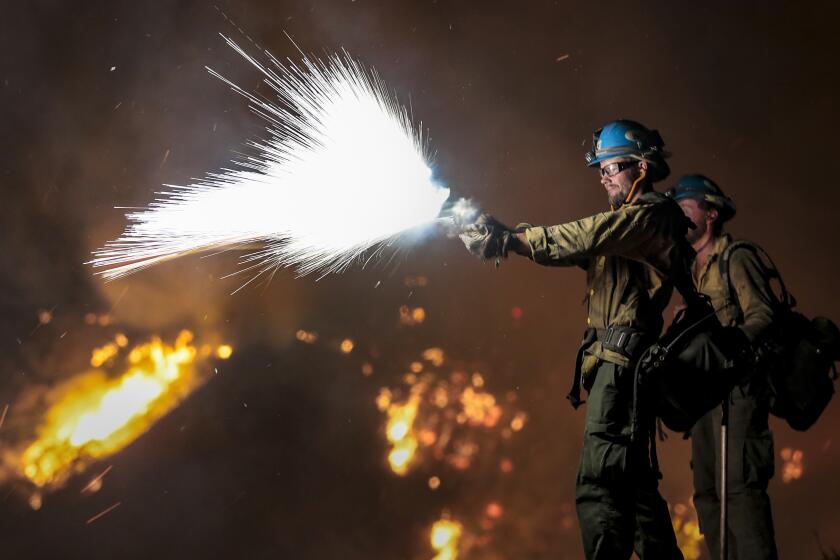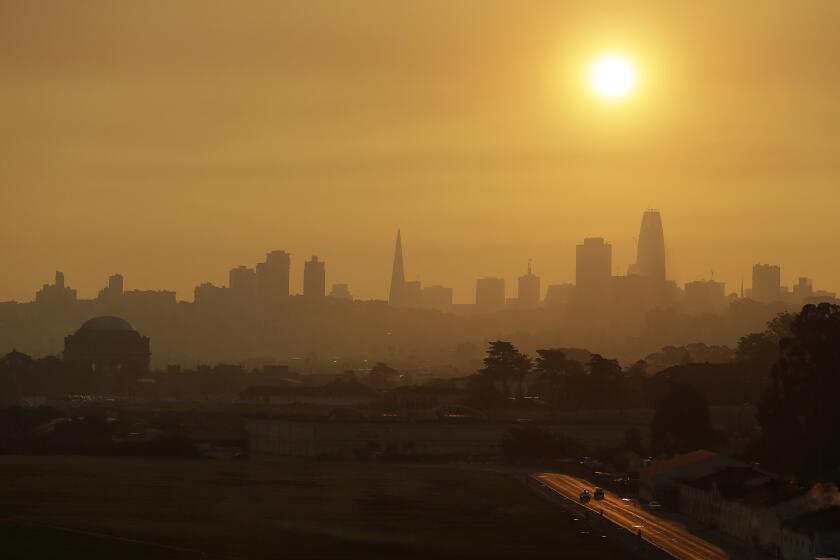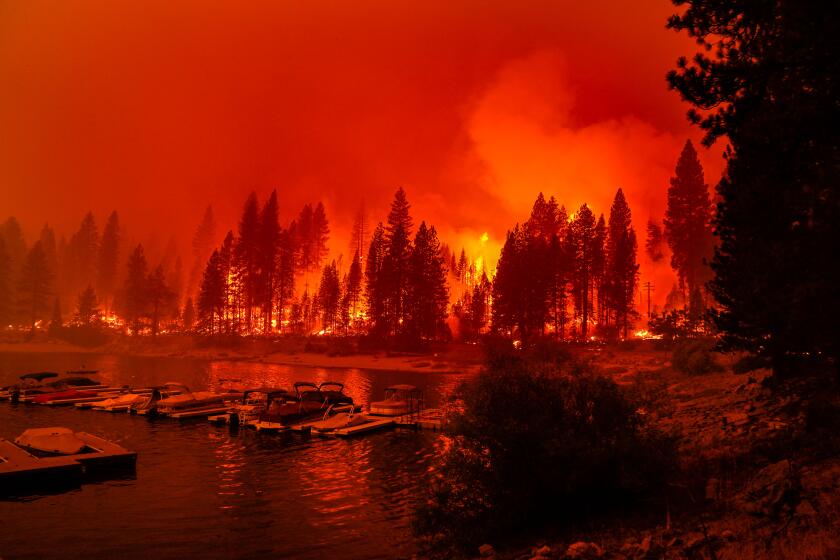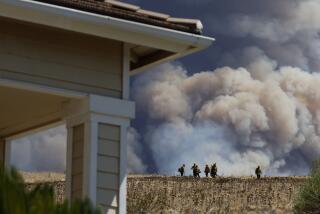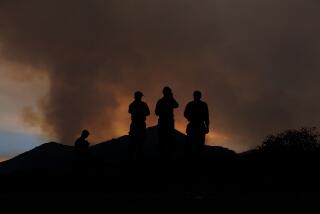‘Unpredictable’ Bobcat fire shifts and grows as local emergency is declared
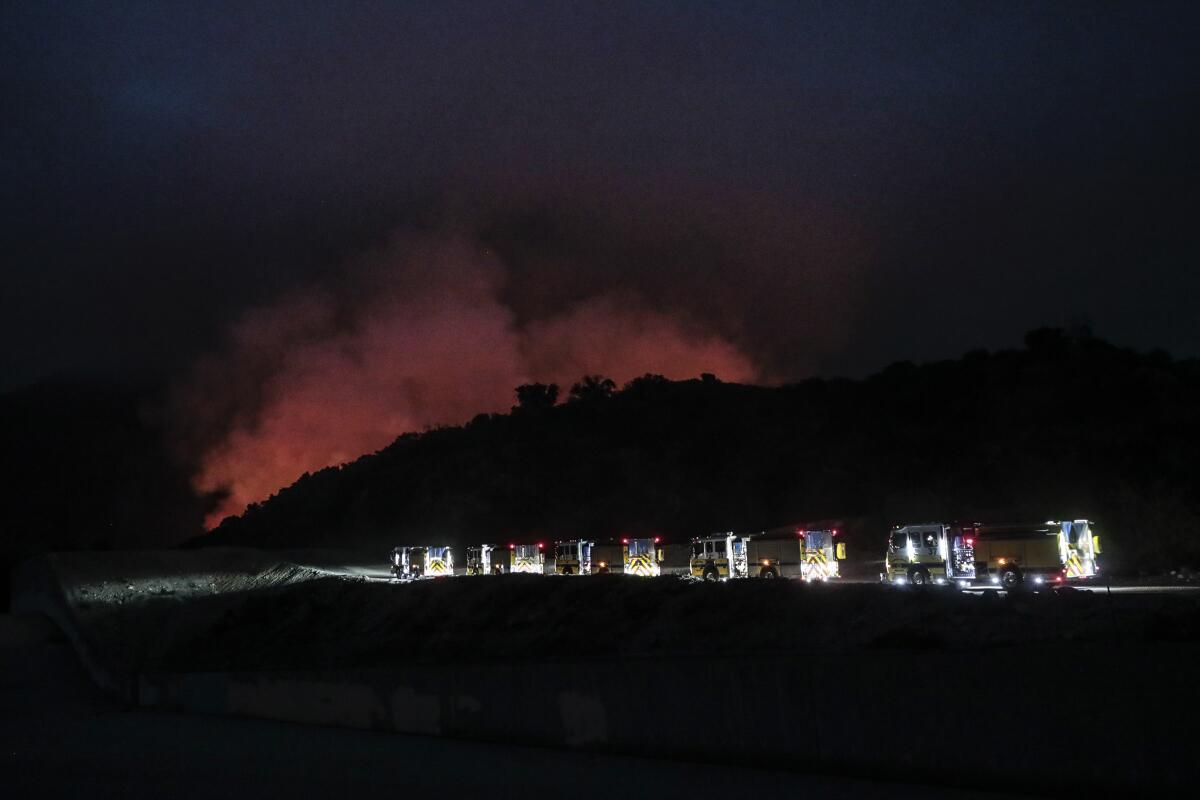
More than 350 households in Arcadia and Sierra Madre remain under evacuation orders Monday as flames from the Bobcat fire creep toward San Gabriel Valley foothill communities.
The fire, which has grown to more than 36,000 acres since igniting Sept. 6, remains at 6% containment. The U.S. Forest Service said Monday there had been “significant western growth” toward Mt. Wilson and the Chantry Flat area in Santa Anita Canyon, marking a shift from last week’s northeastern expansion.
“Crews today will be focused on strengthening and improving the fire line between the south end of the fire and the foothills communities,” the Forest Service said. Nearly 900 firefighters have been assigned to combat the blaze.
Residents of Monrovia, Bradbury, Altadena, Duarte, Pasadena and parts of Sierra Madre remain under an evacuation notice and should be prepared to leave their homes if prompted.
Fears of a significant spread of the Bobcat fire dissipated as Santa Ana winds failed to materialize, but foothill communities remain on high alert.
In response to the fire, Los Angeles County Supervisor Kathryn Barger on Sunday signed a proclamation declaring a local emergency.
“Conditions of disaster or of extreme peril to the safety of persons and property arose as a result of the Bobcat Fire,” the proclamation said, adding that the fire “has created conditions that are or likely to be beyond the control of local resources and require the combined forces of other political subdivisions.”
The emergency declaration will help the county accelerate requests for financial resources and additional support for the area, said Helen Chavez, assistant director for the Los Angeles County Office of Emergency Management.
“We can procure things — items, supplies, personnel — much, much faster,” Chavez said. “A lot of the red tape is cut.”
The proclamation will be subject to a ratification vote at the Board of Supervisors’ regular meeting Tuesday, although Chavez said that was “largely a formality.”
Record heat. Record acres burned. Sky-high air pollution. The extremes California has experienced in recent weeks all have one thing in common: They were made worse by climate change.
In an update published Monday, officials at the 116-year-old Mt. Wilson observatory said they are preparing to “go to battle.”
“While we hope the Observatory makes it through relatively unscathed, the battle could go either way,” Sam Hale, chairman of the Mount Wilson Institute Board of Trustees, wrote in a statement.
“We cherish the historic telescopes on the mountain that revolutionized humanity’s understanding of the Cosmos and hope they will be safe.”
It’s not just flames that have residents concerned. Smoke from the fire is contributing to poor air quality throughout the region, and smoke advisories have been extended through Monday in most of Los Angeles County and parts of Orange, Riverside and San Bernardino counties.
Altadena resident Kevin Lingenfelser described “a strong, burning, mesquite-like smell” that had lingered for several days.
“My primary concern is for our safety and our home,” Lingenfelser said. “We’ve lived [in La Vina, Altadena] since the community was built in 1998. I don’t want to go through what we had to with the Station fire of 2009, where we had to evacuate for several days.”
Although mandatory evacuation orders have not been issued in Altadena, Lingenfelser said he and his wife and two daughters had “packed just in case.”
The air quality forecast calls for moderate to unhealthful air in Los Angeles County, according to the South Coast Air Quality Management District, and smoky air from the fire is so strong in parts of Eastern Los Angeles that Pasadena City College closed its campus Monday. The L.A. Zoo and the Los Angeles County Arboretum remain closed because of smoke as well.
Current air quality readings in Los Angeles are hovering in the 150-200 range, which is considered “unhealthy for sensitive groups,” according to EPA air monitoring site AirNow. The air quality index, or AQI, is reported on a scale of 0 to 500, with zero representing good air. Measurements higher than 301 are considered hazardous.
“I can definitely smell smoke this morning,” said Mike Bruckner, deputy city manager in Arcadia.
To understand why so many fires are burning out of control in the West, you have to go back to Labor Day — and the freak snowstorm that hit Colorado.
Bruckner said most residents had complied with Arcadia’s evacuation orders, and several others left voluntarily. He credited bulldozer lines and hand crews for helping keep the fire from making its way into the community, and said that the priority for the rest of the day would be “continuing to monitor the progression of the fire.”
Residents of the area received additional bad news Sunday when estimates for containment of the fire were pushed back by two weeks to Oct. 30.
Angeles National Forest spokesman Andrew Mitchell said the decision to push the date was based on the size of the fire, the amount of personnel available and “the unpredictability of this fire so far.”
Mitchell said wind gusts up to 15 mph were expected during the day, but he attributed much of the fire’s current growth to the dry vegetation fueling the blaze.
“It’s completely terrain-driven at this point in time,” Mitchell said.
A virtual public meeting with representatives from the fire has been scheduled for 6:30 p.m. Monday. The meeting will be held via Zoom and can be accessed on the Forest Service’s website.
People in need of immediate assistance can contact the local Red Cross via the Disaster Distress Hotline at (800) 675-5799, and residents should continue to monitor local alerts and be prepared to follow official orders.
“I always try to reiterate the fact that evacuation orders are serious,” Mitchell said. “Make sure to go.”
More to Read
Sign up for Essential California
The most important California stories and recommendations in your inbox every morning.
You may occasionally receive promotional content from the Los Angeles Times.
